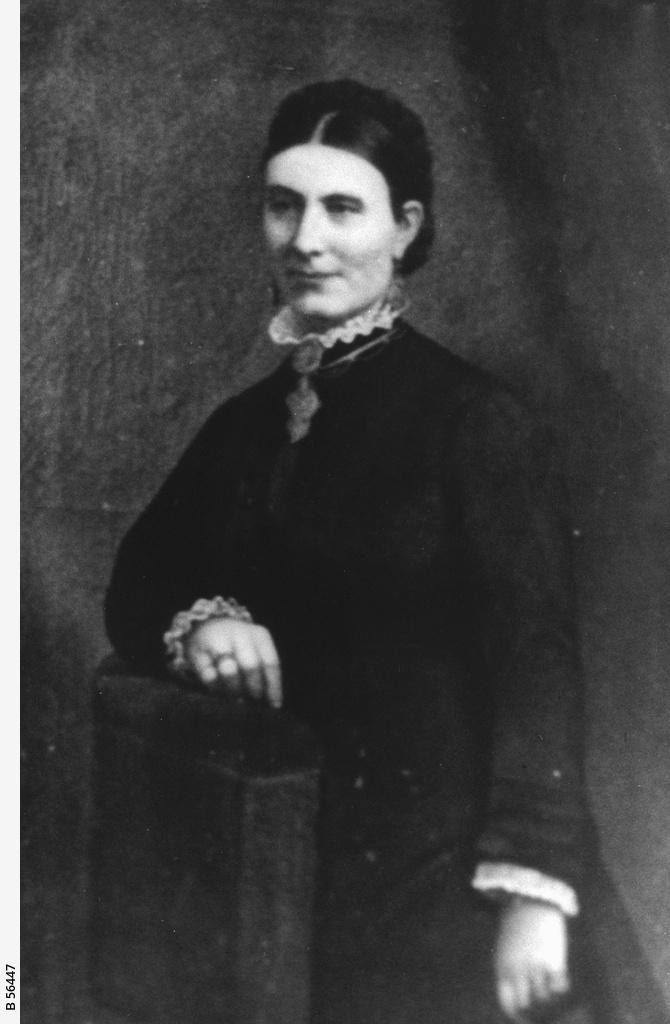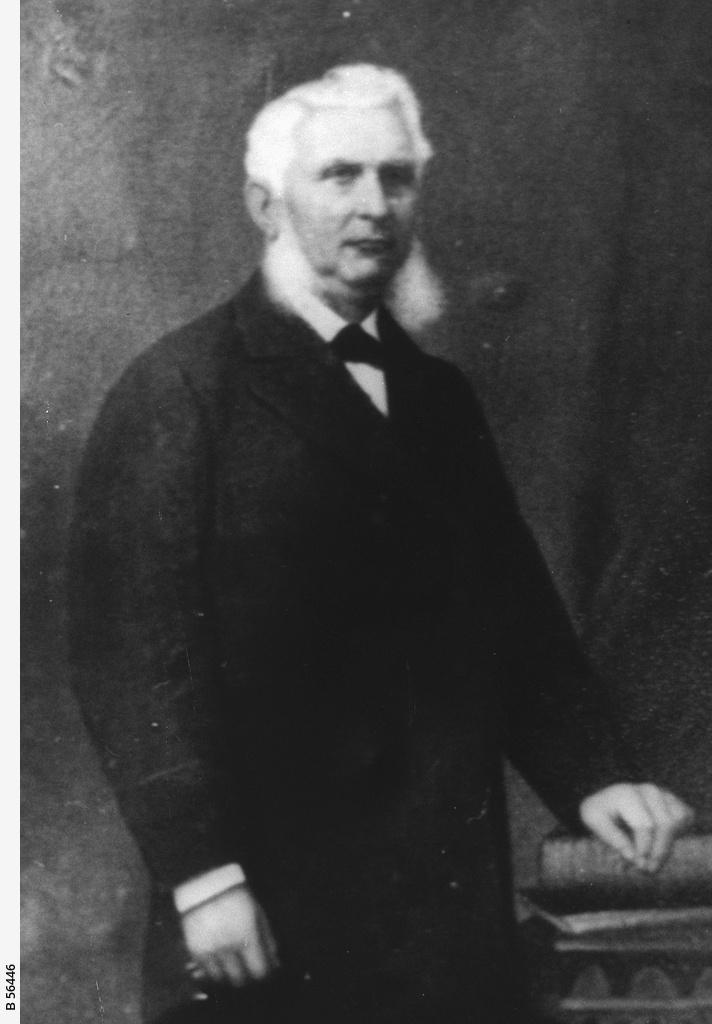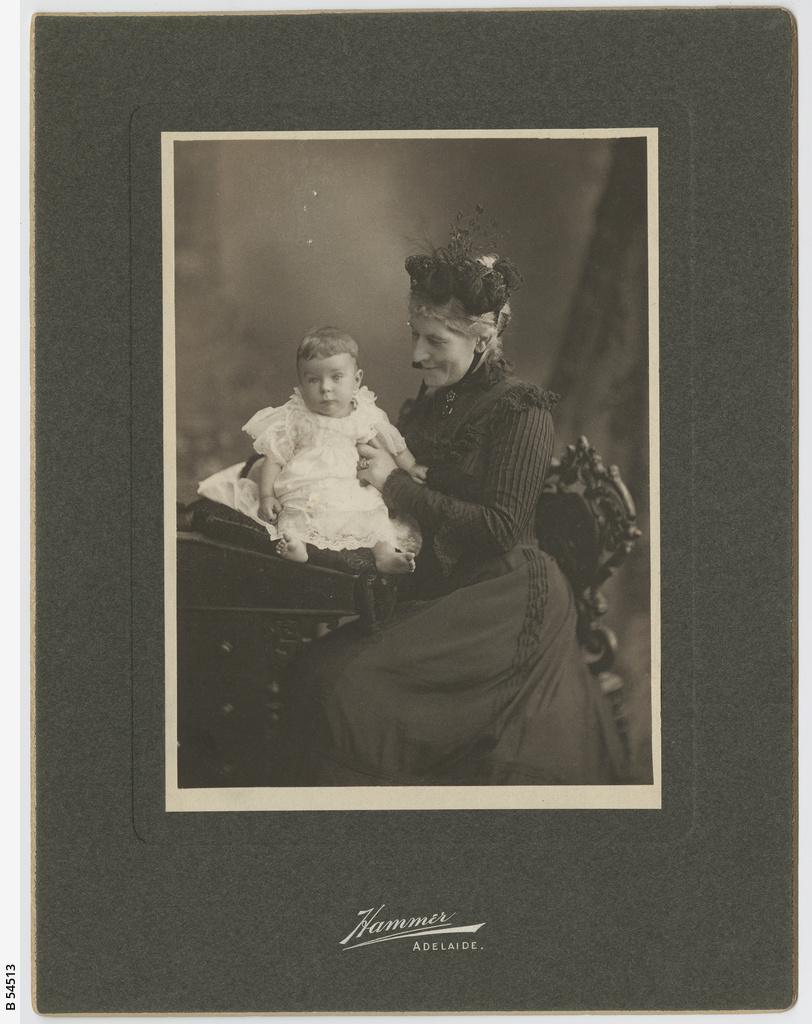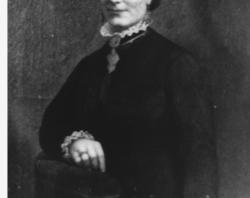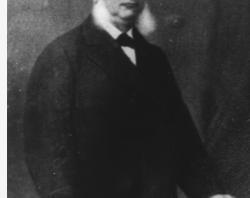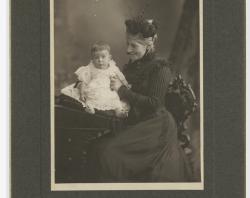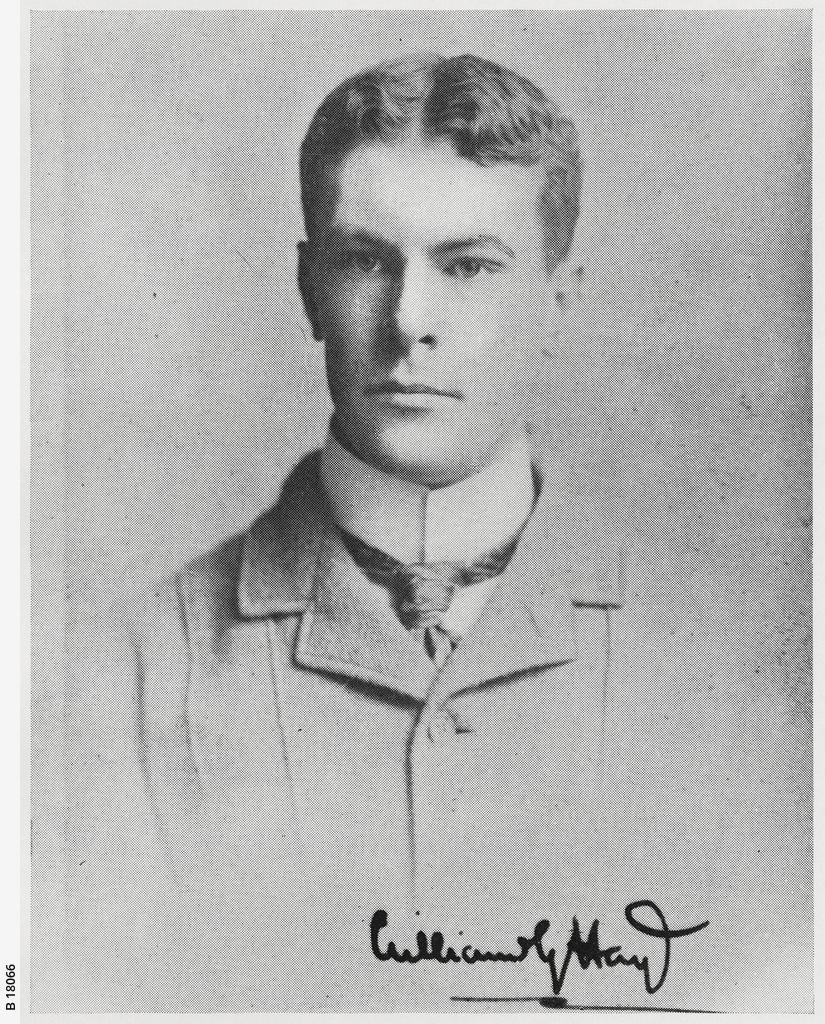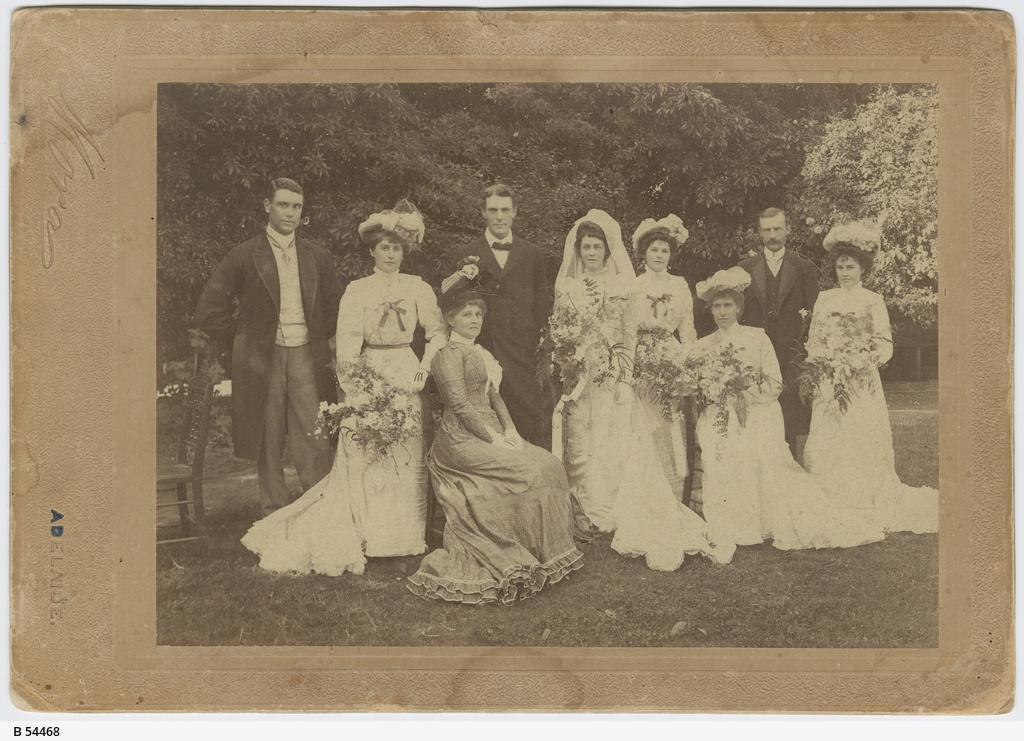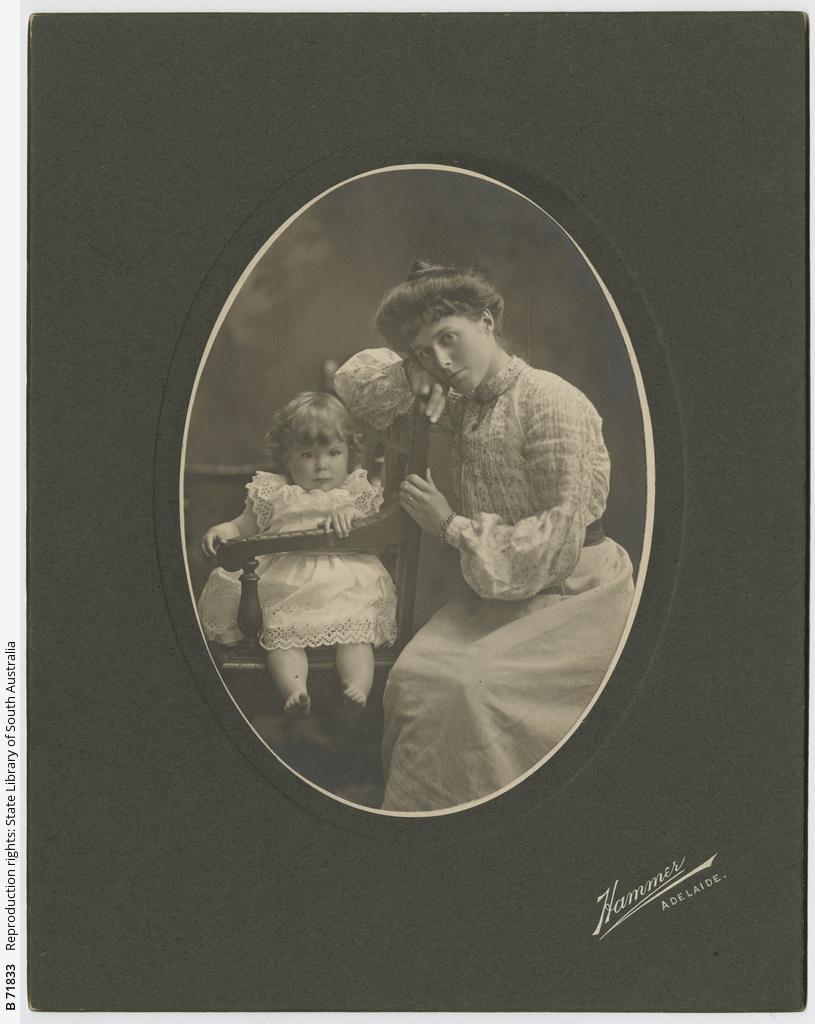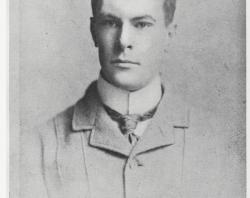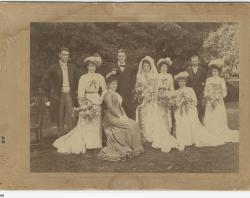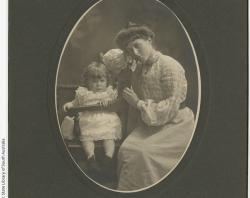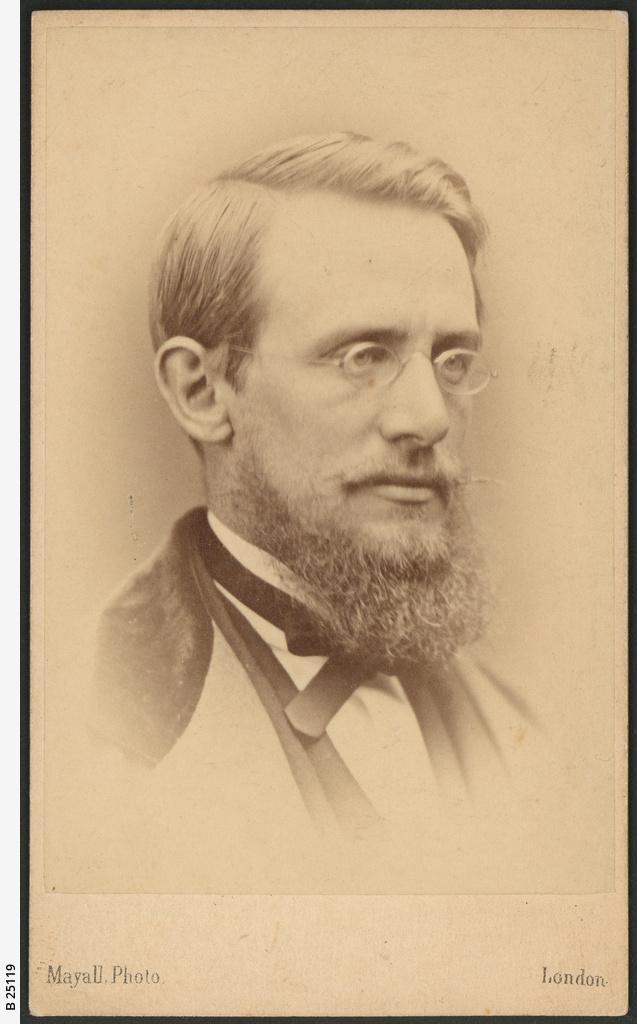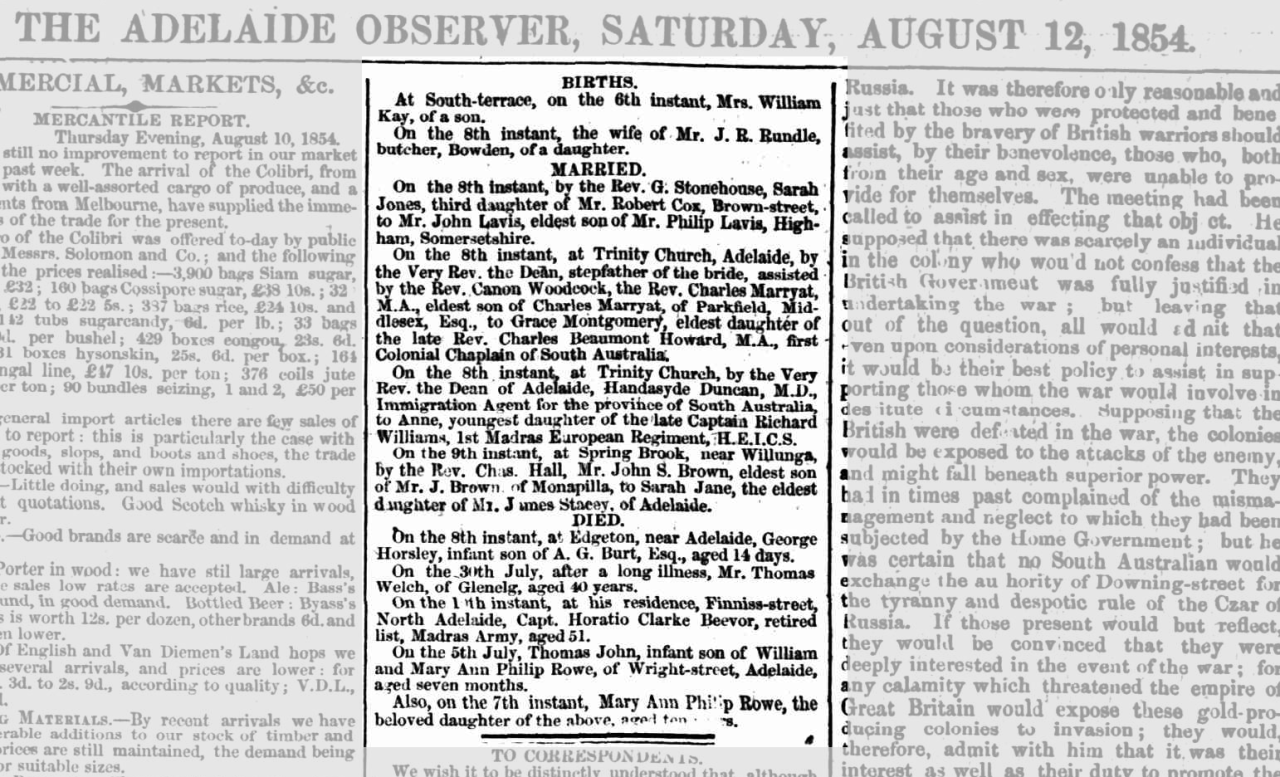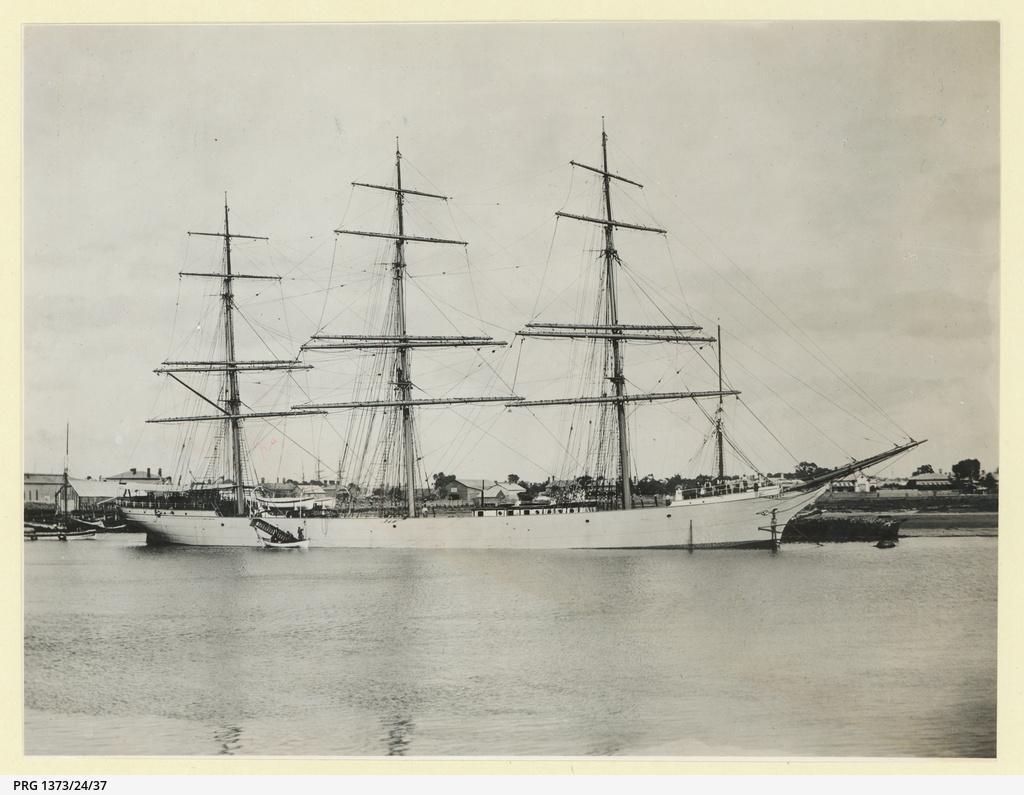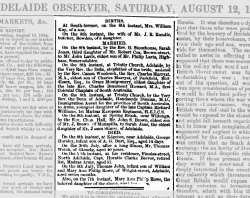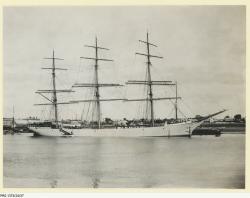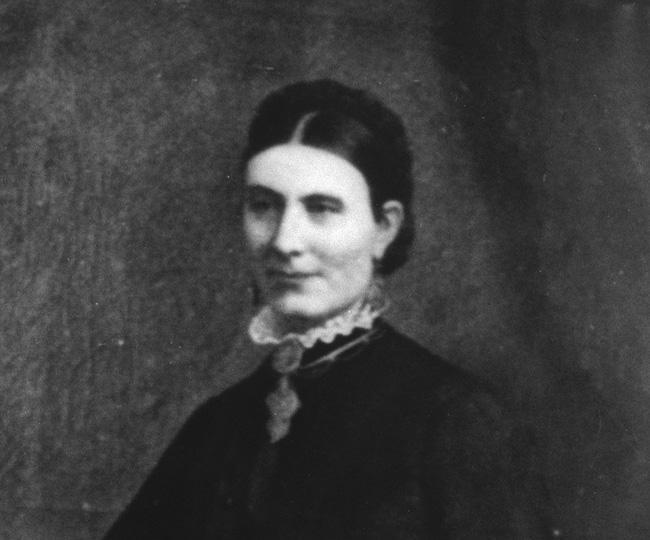
By all accounts hers was a blissfully happy marriage. Alexander Hay was a very wealthy man, and in addition to a mansion at Burnside, he built Agnes a summer residence of 20 rooms on a hill above the little village of Port Victor (now Victor Harbor). Agnes described the house, ‘Mount Breckan’, as
‘beautiful from its situation, beautiful from the love that reared it, and beautiful from the life that was lived in it.’
~ After-glow memories, p. 64
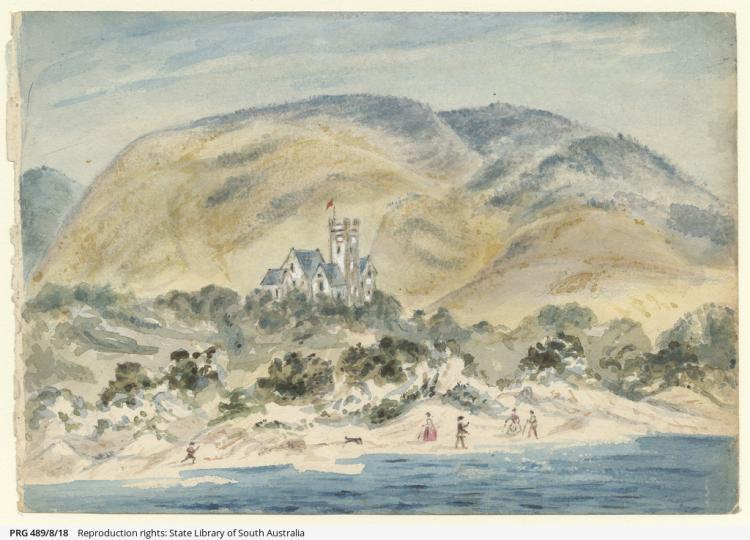
Courting through letters
Agnes’ son, William Gosse Hay, was a celebrated author of historic novels set in convict-era Tasmania. He courted his wife-to-be, Mary Williams, a daughter of the Rev. Francis Williams, the headmaster of St Peter’s College, in a series of letters written from England to Adelaide over a period of almost two years.
William had only ever spoken a few words to Mary when he was being coached by her father for his university entrance exams five years earlier. But through all his years at university in Cambridge, he had never forgotten her. Their letters travelled slowly back and forth across the world by ocean steamer as the relationship developed. Eventually William proposed, and Mary accepted,
‘… think of our tale – how it would read – the time – the distance’, William marvelled. (William Hay to Mary Williams, 26 January, 1900)
William returned to Adelaide and married Mary just a few weeks later, in October 1901. The couple had three sons and eventually settled at ‘Tower House’ at Beaumont.
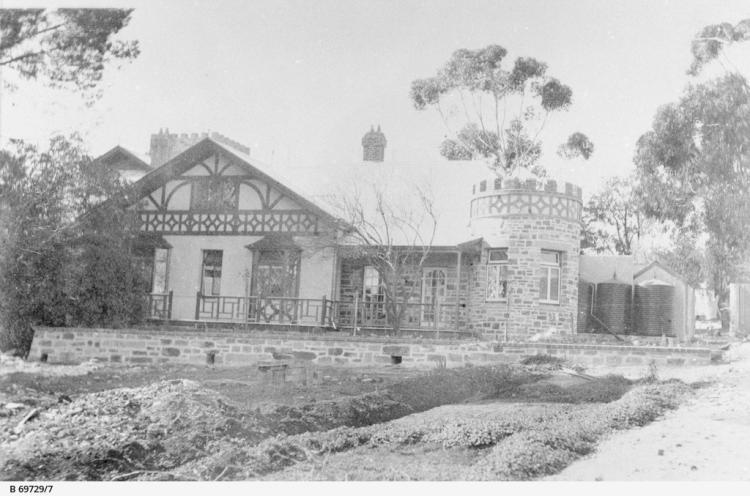
A clandestine marriage
The course of true love did not always run so smoothly. Chief Justice Samuel Way was a great friend of Agnes Hay’s husband, Alexander. Samuel frequently spent his holidays with the Hay family in their summer residence at Port Victor. Although living ostensibly as a bachelor, it is now known that he had a wife and several children living in Tasmania and later in Melbourne. As South Australia’s Chief Justice, Way apparently felt that he could not acknowledge his marriage to a woman who was the daughter of two convicts. Historians believe that Way’s father, South Australia’s first Bible Christian minister (the Rev. James Way) had performed a clandestine marriage between Samuel Way and Susannah Gooding sometime in the 1860s.
Samuel Way travelled to Melbourne in September 1888 when Susannah was dying but he arrived too late.
… to Club after luncheon and found there letter with sad news of death of my dear S. on Wednesday at 10.20 p.m. On account of this sad news I excused myself from going to Lady Lock’s musical … instead went to Parkville where I saw Jno & James, Frank & Alf: & the dear remains …
~ Sir Samuel Way collection. SLSA: PRG 30
A bumpy road to love
A little earlier in the colony’s history, Agnes Hay’s close friend Grace Howard describes in her 1853 diary, an unwanted proposal from a widowed doctor living at Port Adelaide.
Staying at Glenelg with her family for the summer, nineteen-year-old Grace recorded,
Saturday 24th [December] Dr Duncan called having the evening before written a letter to me on a subject which I had not wished resumed.
The widower was undeterred and a few months later, in February 1854, Grace wrote,
Friday 3rd … there was also a letter for me which on opening I was rather astonished to find a poetical complaint of my coldness to a certain gentleman.
Dr Duncan recovered from the rejection and went on to marry someone else, while Grace Howard married the young Anglican minister Charles Marryat. He was a nephew to Lady Young, wife of the then governor of South Australia, Sir Henry Young. Both marriages occurred on the same day, and in the same place, Holy Trinity Church, 8 August 1854.
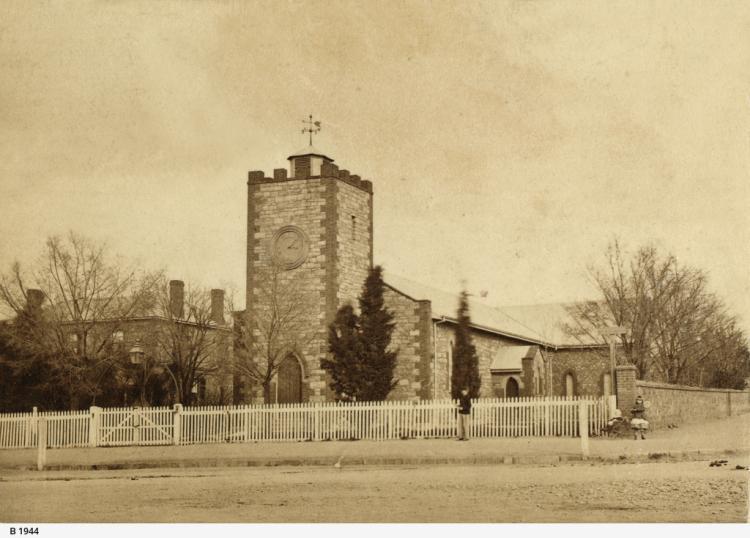
Agnes Hay describes several unhappy and runaway marriages in her autobiography. A fellow passenger with her on the Orient in 1859, Charlotte Taylor, was coming out to meet her fiancé in South Australia but instead eloped interstate with a young male passenger named Majendie.
This particular voyage seems to have been a hotbed of romance. Agnes also describes a new bride, Mary, wife of William Henry Angas, who confided in Agnes the discovery of her husband’s “former life” and “dreadful habit” (presumably heavy drinking). This caused “the complete ruin of her young life” and led to the couple’s separation. (After-glow, pp. 191-192)
Agnes herself had recently experienced a religious conversion. But while trying to convert one of the ship’s officers, she instead found him proposing to her!
‘The course of true love never did run smooth.’
~ William Shakespeare, A Midsummer night’s dream, act 1, scene 1.
These are just a few of the love stories hiding within the State Library stacks, carefully recorded within the pages of published memoirs, old letters and diaries, or hinted at in newspaper articles and recorded reminiscences.
Written by Anthony Laube, Team Leader, Collection Development (Published Collections)
